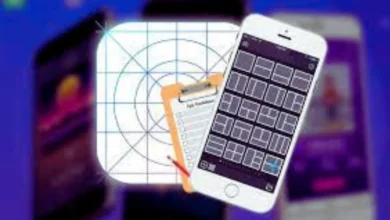5 Innovative and Efficient Ways to Track Employee Hours in Real-Time

The importance of tracking employee hours in real-time cannot be overstated. Accurate and efficient employee hour tracking is crucial for businesses to manage payroll and allocate resources effectively. To achieve this, there are 5 innovative and efficient ways that can be utilized. From using time tracking software to punch card time tracking, these methods provide businesses with a range of options to find the best way to track employee hours for their specific needs. By embracing the latest technology and tools, businesses can streamline their processes and make informed decisions.
Method 1: Time Tracking Software
Method 1 of tracking employee hours in real-time is through the use of time tracking software. This software provides a digital solution for businesses to accurately record employee hours, often in real-time. The software operates by logging employee work hours, usually through a computer or mobile device, making it convenient for both the employer and employee. The benefits of using time tracking software include improved accuracy, streamlined processes, and data analysis capabilities. However, there can also be drawbacks such as technical difficulties and potential resistance from employees. Examples of popular time tracking software include Buddy Punch, Toggl, Hubstaff, and Hours. By utilizing time tracking software, businesses can find the best way to track employee hours and make informed decisions.
Method 2: Mobile Time Tracking Apps
Method 2 of tracking employee hours in real-time is through the use of mobile time tracking apps. These apps offer a flexible and accessible solution for businesses to monitor employee hours. Mobile time tracking apps allow employees to clock in and out from anywhere, ensuring accurate hour tracking. The benefits of using these apps include increased flexibility, convenience, and accessibility for both the employer and employee. However, there can also be drawbacks such as technical difficulties and potential inaccuracies if the app is not used properly. Examples of popular mobile time tracking apps include Buddy Punch, TSheets, and Jibble. By utilizing mobile time tracking apps, businesses can find the best way to track employee hours and stay on top of their workforce management.
Method 3: Biometric Time Tracking Devices
Method 3 of tracking employee hours in real-time is through the use of biometric time tracking devices. These devices use biometric data, such as fingerprints, to accurately track employee hours in real-time. The benefits of using biometric time tracking devices include increased accuracy, reduced errors, and elimination of buddy punching. However, there can also be drawbacks such as privacy concerns and technical difficulties. Examples of popular biometric time tracking devices include TimeClock Plus, uAttend, and Lathem. By utilizing biometric time tracking devices, businesses can find the best way to track employee hours and ensure the accuracy of their payroll and resource allocation.
Method 4: Smart Watch Time Tracking
Method 4 of tracking employee hours in real-time is through the use of smart watch time tracking. This method utilizes the technology of smartwatches to track employee hours through a combination of GPS and other sensors. The benefits of using smart watch time tracking include increased convenience, accuracy, and mobility. Employees can clock in and out from anywhere, and the data can be synced in real-time. However, there can also be drawbacks such as technical difficulties and compatibility issues with certain devices. Examples of popular smart watch time tracking devices include TSheets and WorkPuls. By utilizing smart watch time tracking, businesses can find the best way to track employee hours in real-time and keep pace with the fast-changing technological landscape.
Method 5: Punch Card Time Tracking
Punch card time tracking is a method of employee hour tracking that uses a physical punch card system. This involves the employees punching in and out of work using a time clock device. The benefits of using this method include its simplicity and ease of use, as well as its low cost compared to other time tracking methods. However, a disadvantage of this method is that it can be easily manipulated, which can lead to inaccurate record keeping. Popular examples of punch card time tracking devices include traditional time clocks and modern biometric time clocks that use fingerprints or facial recognition. Despite its disadvantages, punch card time tracking remains one of the most efficient and innovative ways to track employee hours in real-time.
Conclusion
In conclusion, tracking employee hours in real-time has become an essential aspect of modern business operations. The 5 innovative and efficient methods discussed include digital time cards, GPS tracking, mobile time tracking, punch card time tracking, and buddy punching. When choosing the best method, businesses should consider factors such as size, budget, and industry. To ensure accurate and efficient tracking, it is recommended for businesses to embrace the latest technology such as Buddy Punch apps. These apps provide an easy-to-use platform for businesses to track employee hours, monitor attendance, and manage payroll. By choosing the right solution, businesses can streamline their time tracking processes, improve productivity, and increase profitability. Thus, it is encouraged for businesses to invest in the latest technology to enhance their employee hour tracking capabilities.

